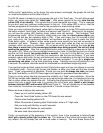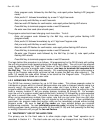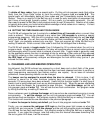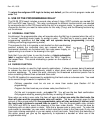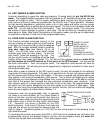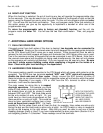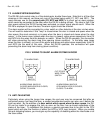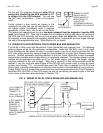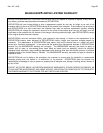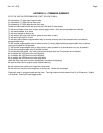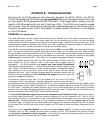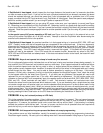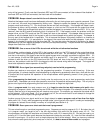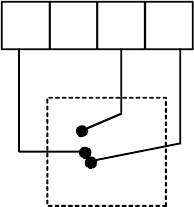
Rev. A.2, 10/03 Page-19
6.5 NIGHTLIGHT FUNCTION
When this function is selected, the act of touching any key will operate the programmable relay
for five seconds. This may be used to turn on a lamp directed at the Keypad at night so that the
person using the Keypad can see to enter the code. Put the unit into program mode and enter
7-7. You will see the two flash confirmation. Then, exit program mode. Note that selection of
this option means you give up the opportunity to implement a doorbell or other use of the
programmable relay.
To return the programmable relay to factory set (doorbell) function, put the unit into
program mode and enter 7-8. You will see the two flash confirmation. Then, exit program
mode.
7. ADDITIONAL HARD WIRED OPTIONS
7.1 DUAL PAD OPERATION
If keypad control from both sides of the door is desired, two keypads can be connected to
one CPU Board. Simply put the colored wires from both keypads into the appropriate terminals
on the CPU Board such that 2 wires are in each terminal. Either keypad will then be able to
release the lock and both keypads will beep and illuminate their LED's when either one is used.
Two is the maximum number of keypads that can be connected to one CPU Board. Note that in
the unusual case where both keypads are being used simultaneously, the door will not release
as the sequence will certainly be disturbed. Only one keypad may be used at a time. Be sure
you don’t violate egress building codes when employing a keypad on the inside of a
door. Check with your local building or fire department.
7.2 HARDWIRED CODE DISABLING
This means making a switch connection to the CPU board which will cause valid codes to not be
accepted. The DK-26 has two terminals marked “HCD” and “UCD” which will respectively
disable the Hard code and all User codes. Simply connect the SRC terminal to either of
these terminals via an external switch and the respective codes will not function while the switch
is closed. Alternately if you supply +12V or +24V from the DC+ terminal to either of these
terminals, it will have the same effect.
The main reason for doing this is to support
day/night operations. For example, you could
allow all User codes to be active during the day
but disable them at night by closing a switch
between SRC and UCD. The Hard code would
be the only method of entry at night. Or, you
could have no Hard code programmed so that
there would be no entry at night. This could be
done by timer controlled contacts from a timer
such as Securitron’s model DT-7. It’s finally
possible to flip the codes (Hard and all User) so that, for example, User codes are active only
during the day and the Hard code is active only at night. An SPDT switch or relay is needed to
do this as the drawing to the right shows. Note that you won’t be able to use one of these
disabling features (Hard or User) if you have implemented the door prop alarm (Section 6.4) or
anti-tailgating (Section 7.4) features. These reassign one of the terminals.
SRC
REX UCD HCD
C
NC
NO
SPDT
SWITCH
OR RELAY
WITH THE CONTACTS
AS SHOWN, THE HARD
CODE IS DISABLED.
WHEN THEY SWITCH,
ALL USER CODES
WILL BE DISABLED.



